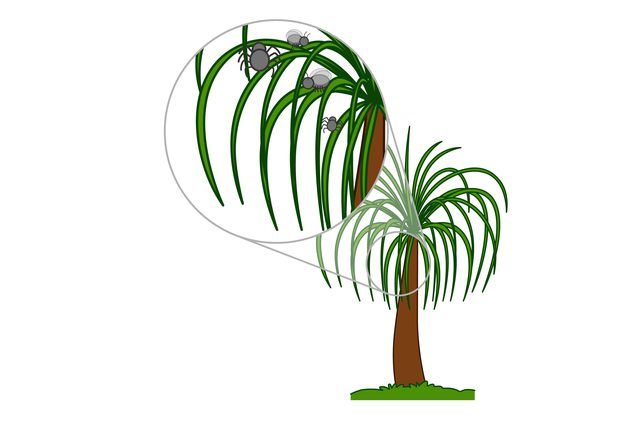Bulbs
Flower Basics
Flower Beds & Specialty Gardens
Flower Garden
Garden Furniture
Garden Gnomes
Garden Seeds
Garden Sheds
Garden Statues
Garden Tools & Supplies
Gardening Basics
Green & Organic
Groundcovers & Vines
Growing Annuals
Growing Basil
Growing Beans
Growing Berries
Growing Blueberries
Growing Cactus
Growing Corn
Growing Cotton
Growing Edibles
Growing Flowers
Growing Garlic
Growing Grapes
Growing Grass
Growing Herbs
Growing Jasmine
Growing Mint
Growing Mushrooms
Orchids
Growing Peanuts
Growing Perennials
Growing Plants
Growing Rosemary
Growing Roses
Growing Strawberries
Growing Sunflowers
Growing Thyme
Growing Tomatoes
Growing Tulips
Growing Vegetables
Herb Basics
Herb Garden
Indoor Growing
Landscaping Basics
Landscaping Patios
Landscaping Plants
Landscaping Shrubs
Landscaping Trees
Landscaping Walks & Pathways
Lawn Basics
Lawn Maintenance
Lawn Mowers
Lawn Ornaments
Lawn Planting
Lawn Tools
Outdoor Growing
Overall Landscape Planning
Pests, Weeds & Problems
Plant Basics
Rock Garden
Rose Garden
Shrubs
Soil
Specialty Gardens
Trees
Vegetable Garden
Yard Maintenance
How to Care for a Ponytail Palm Tree
How to Care for a Ponytail Palm Tree. From its fat trunk to the long, graceful clusters of strappy leaves, the ponytail palm (Beaucarnea recurvata) adds interest whether you grow it outdoors or as a potted houseplant. It isn't a true palm, but rather a succulent. Ponytail palm grows outdoors only in U.S. Department of Agriculture plant hardiness...
From its fat trunk to the long, graceful clusters of strappy leaves, the ponytail palm (Beaucarnea recurvata) adds interest whether you grow it outdoors or as a potted houseplant. It isn't a true palm, but rather a succulent. Ponytail palm grows outdoors only in U.S. Department of Agriculture plant hardiness zones 10 through 11, but will grow as a houseplant in a sunny spot. Ponytail palm only requires minimal care to remain healthy and attractive.
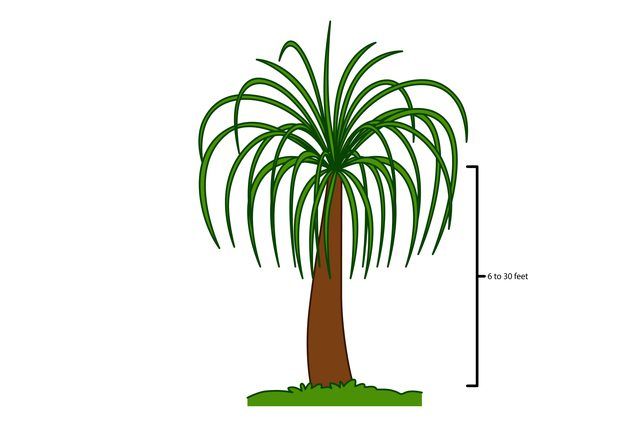
Providing a ponytail palm with full, all-day sun keeps the leaves green and lush. Avoid planting a ponytail palm in an area shaded by taller trees or buildings. Although the tree tolerates most soil types, the site must drain well. Working a 2- to 4-inch layer of compost into the top 12 to 18 inches of soil before planting can improve drainage. A ponytail palm can tolerate short periods of drought, so it's better to plant it in a sandy, quick-drying spot than in wet, heavy soil. A ponytail palm does best in warm weather, above 55 degrees Fahrenheit, so avoid growing it where it will be exposed to cold, drying winter winds.
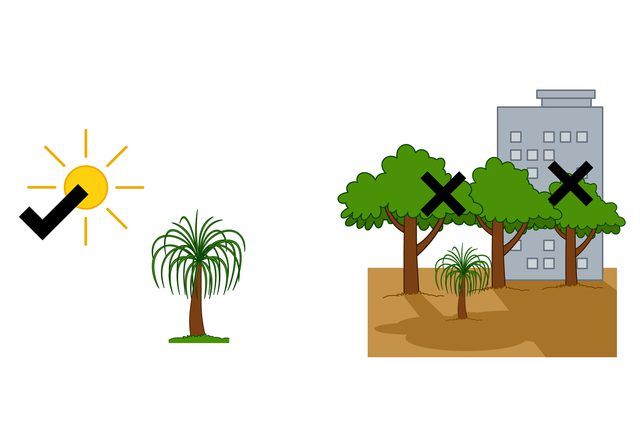
A ponytail palm needs only infrequent watering to remain healthy and it will tolerate some drought. In extremely dry climates or during drought conditions, water the palm deeply every two to four weeks. Provide enough water to completely saturate the soil to 12 feet deep, and then allow it to dry out almost completely before watering again. The ponytail palm likely requires no additional watering in climates where rainfall is more common or if it is planted near a lawn that's watered regularly. An outdoor-grown ponytail palm rarely needs fertilizing because it will get enough from the soil or nearby lawns that are fertilized.
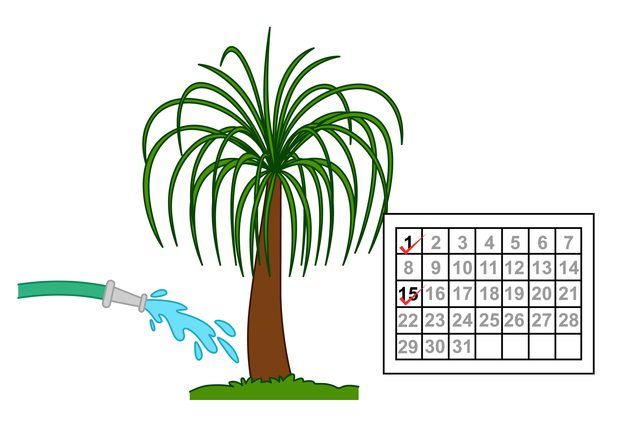
A full grown ponytail palm can reach up to 30 feet tall with leaves up to 6 feet long. Pruning isn't necessary, but you can cut off any dead, brown leaves if you can reach them. Disinfect shears by wiping them with a isopropyl alcohol-soaked cloth before pruning. Remove dead leaves at their base but avoid cutting into the growing point from where the foliage emerges. You can also trim back dead tips by snipping them off and leaving the remaining healthy leaf on the plant. A ponytail palm may also produce small offsets or suckers around the base, which you can pull or cut off at ground level. Dispose of the suckers or plant them in pots to grow new plants. Always use pots with drainage holes.
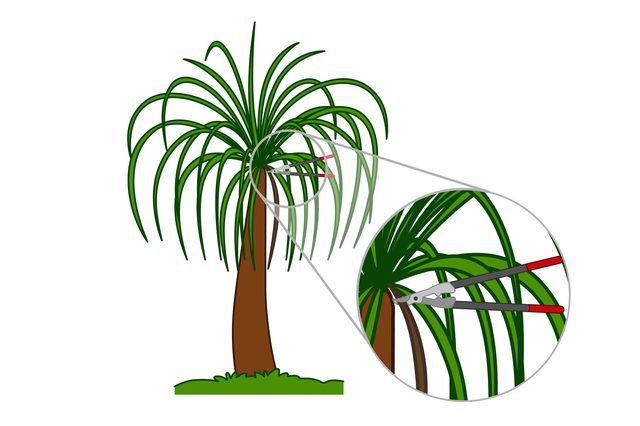
A potted ponytail palm may only grow 6 to 8 feet tall when kept in a large 5- to 10-gallon pot. Use a pot with bottom drainage holes and drip tray underneath to catch water that drains through the potting medium. Place the palm on a wheeled plant cart to simplify moving, if it's large. Water a potted palm when the top 1 to 2 inches of soil feel dry, and empty out the excess water from the tray after each watering. A potted ponytail palm will do better with a monthly application of a soluble houseplant fertilizer, such as a 24-8-16 blend, during the spring and summer. Mix 1/2 teaspoon of the fertilizer per every 2 quarts of water, or mix it at half the rate recommended on the package, and water the palm with the solution.
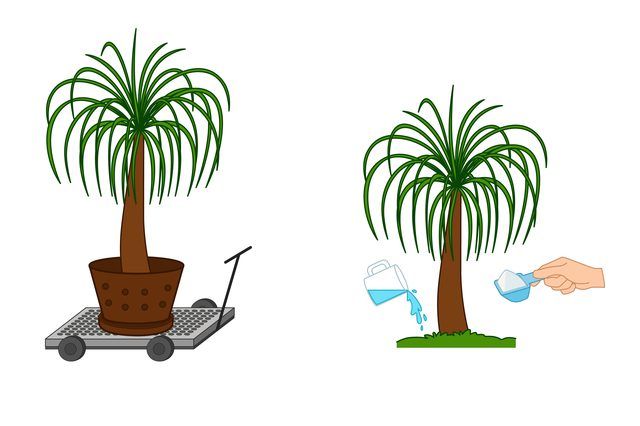
An outdoor ponytail palm rarely has problems with pests and diseases. Indoor palms are subject to common houseplant pests, including aphids, spider mites and scale insects. Remove small, pear-shaped aphids and tiny mites by rinsing them of the leaves with a sharp spray of water, focusing on the undersides of the leaves where they tend to congregate. Scrape off scale insects, which look like flat growths along the stems or on the leaf surface, with a thumbnail or dab them with an alcohol-soaked cotton swab to kill them. Leaf spots and other fungal problems are usually only an issue during wet weather or if you overwater, but they rarely have a long-term impact on plant health if you water the plant correctly.
